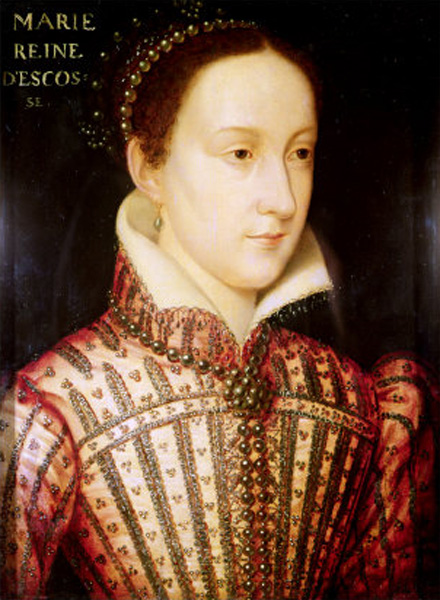
Mary Queen of Scots
Queen Regent of Scotland 14 December 1542 to 24 July 1567 and queen consort of France from 10 July 1559 to 5 December 1560.
7/8 December 1542 – 8 February 1587
In 1542 Mary was the only surviving legitimate child of King James V of Scotland and so on his death she acceded to the throne when she was just six days old. She spent most of her childhood in France while Scotland was ruled by regents. In 1558 she married the Dauphin of France, Francis. He ascended the French throne as King Francis II in 1559 and Mary briefly became queen consort of France, until his death on 5 December 1560. Mary then returned to Scotland on 19 August 1561 and four years later married her first cousin, Henry Stuart, Lord Darnley.
In February 1567, Lord Darnley’s residence was destroyed by an explosion and Darnley was found murdered in the garden. It was generally believed that James Hepburn, 4th Earl of Bothwell orchestrated Darnley's death, but he was acquitted of the charge in April 1567 and the following month he married Mary. However, Mary’s marriage to Bothwell was contentious and frowned upon by many and following an uprising against the couple, Mary was imprisoned in Loch Leven Castle.
On 24 July 1567, she was forced to abdicate in favour of James (her one-year-old son by Darnley). After an unsuccessful attempt to regain the throne, Mary fled southwards seeking the protection of her first cousin once removed, Queen Elizabeth I of England. Mary had previously claimed Elizabeth's throne as her own and was considered the legitimate sovereign of England by many English Catholics, including participants in a rebellion known as the Rising of the North. Perceiving her as a threat, Elizabeth had her confined in a number of castles and manor houses in the interior of England. After eighteen and a half years in custody, Mary was found guilty of plotting to assassinate Elizabeth, and was subsequently executed.
Interesting Facts
- Mary’s last night was spent drafting an elaborate will in which all her servants were remembered. On the day of her execution, she appeared in her customary black cloak and with a white veil over her head. She then dropped the cloak to reveal a crimson red dress.
- It took three strokes of the axe to sever Mary's head from her body. To the horror of all those present, her body then started to move. It was revealed that her little terrier, Geddon, who was Mary's companion during her last years in prison, had hidden under her voluminous gown all through the execution.
To make your own nomination download the nomination form here